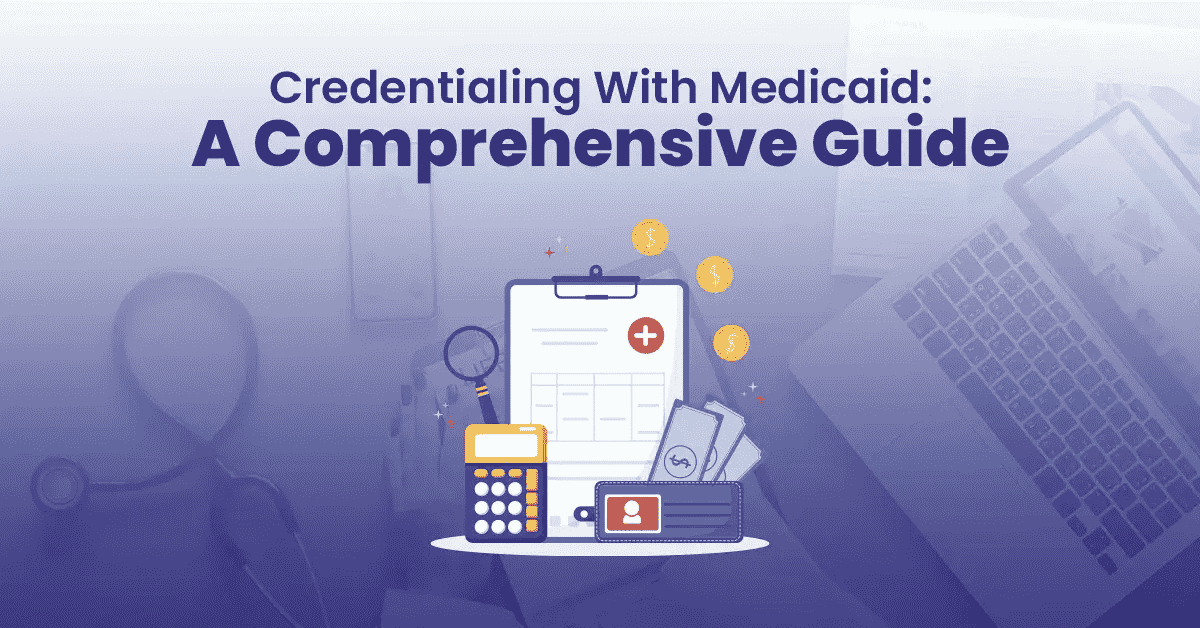In the complex landscape of healthcare reimbursement, navigating the billing requirements of government-sponsored programs like Medicare and Medicaid can be a daunting task for healthcare providers. Understanding the intricacies of Medicare and Medicaid billing is essential for healthcare practices to ensure proper reimbursement and compliance with regulations. In this comprehensive guide, we’ll explore the key components of Medicare and Medicaid billing requirements and provide valuable insights to help healthcare providers navigate these programs successfully.
Overview of Medicare and Medicaid:
Medicare and Medicaid are two government-sponsored healthcare programs designed to provide coverage for eligible individuals, primarily seniors and low-income individuals, respectively. While both programs aim to improve access to healthcare services, they operate under different structures and eligibility criteria.
Medicare:
- Medicare is a federal health insurance program primarily for individuals aged 65 and older, as well as younger individuals with certain disabilities or end-stage renal disease.
- Medicare is divided into several parts, including Part A (hospital insurance), Part B (medical insurance), Part C (Medicare Advantage plans), and Part D (prescription drug coverage).
- Each part of Medicare covers different services, and providers must bill accordingly based on the services rendered and the patient’s coverage.
Medicaid:
- Medicaid is a joint federal and state program that provides healthcare coverage to eligible low-income individuals and families.
- Medicaid eligibility and coverage vary by state, as states have flexibility in determining eligibility criteria and benefits.
- Medicaid covers a wide range of healthcare services, including doctor visits, hospital care, prescription drugs, and long-term care.
Understanding Medicare Billing Requirements:
Medicare billing requirements can vary depending on the specific part of Medicare and the services provided. Here are some key considerations for Medicare billing:
Medicare Enrollment and Provider Participation:
- Healthcare providers must enroll in the Medicare program to bill Medicare for services rendered to eligible beneficiaries.
- Providers must adhere to Medicare enrollment requirements and maintain active enrollment status to bill Medicare.
Medicare Coverage and Coding:
- Healthcare services must meet Medicare coverage criteria to be reimbursed.
- Providers must use appropriate Healthcare Common Procedure Coding System (HCPCS) or Current Procedural Terminology (CPT) codes to bill Medicare for services rendered.
- Understanding Medicare’s coverage rules and coding guidelines is essential to ensure accurate billing and reimbursement.
Medicare Claims Submission:
- Providers must submit claims to Medicare for reimbursement within the specified timeframes.
- Claims must include accurate and complete information, including patient demographics, service dates, diagnosis codes, and procedure codes.
- Medicare claims can be submitted electronically through the Medicare Administrative Contractor (MAC) or via paper forms.
Medicare Reimbursement and Payment:
- Medicare reimburses providers based on established fee schedules or payment methodologies, such as the Medicare Physician Fee Schedule (MPFS) or Diagnosis-Related Group (DRG) payments for hospital services.
- Providers must monitor Medicare reimbursement rates and payment updates to ensure proper reimbursement for services rendered.
Understanding Medicaid Billing Requirements:
Medicaid billing requirements can vary significantly by state, as each state administers its Medicaid program. However, certain fundamental principles apply to Medicaid billing:
Medicaid Enrollment and Provider Participation:
- Healthcare providers must enroll as Medicaid providers with the state Medicaid agency to bill Medicaid for services.
- Providers must meet state-specific Medicaid enrollment requirements and maintain active enrollment status.
Medicaid Coverage and Coding:
- Medicaid covers a broad range of services, and providers must verify Medicaid coverage and eligibility for each patient.
- Providers must use appropriate procedure codes, such as HCPCS or CPT codes, to bill Medicaid for services rendered.
- Compliance with state-specific Medicaid coding and documentation requirements is essential to ensure accurate billing and reimbursement.
Medicaid Claims Submission:
- Providers must submit claims to the state Medicaid agency according to state-specific guidelines and timeframes.
- Claims must include accurate and complete information, including patient demographics, service dates, diagnosis codes, and procedure codes.
- Medicaid claims can be submitted electronically or via paper forms, depending on state requirements.
Medicaid Reimbursement and Payment:
- Medicaid reimburses providers based on state-specific fee schedules or payment methodologies.
- Medicaid reimbursement rates may vary by state and by the type of service rendered.
- Providers must monitor Medicaid reimbursement rates and payment policies to ensure proper reimbursement for services provided.
Tips for Successful Medicare and Medicaid Billing:
- Stay Informed: Keep abreast of Medicare and Medicaid program updates, billing regulations, and reimbursement policies to ensure compliance and maximize reimbursement.
- Verify Eligibility: Verify patient eligibility and coverage under Medicare or Medicaid before providing services to avoid claim denials and payment delays.
- Use Proper Coding: Accurate and appropriate use of procedure codes and diagnosis codes is crucial for Medicare and Medicaid billing. Regular training and education on coding guidelines are recommended.
- Monitor Claims Status: Regularly monitor the status of Medicare and Medicaid claims to identify any issues or denials promptly. Follow up on unpaid or denied claims to resolve discrepancies and ensure timely reimbursement.
- Document Carefully: Maintain accurate and comprehensive documentation of patient encounters, including medical records, progress notes, and treatment plans, to support claims for reimbursement.
- Seek Assistance: Consult with billing experts or professional organizations for guidance on complex Medicare and Medicaid billing issues. Consider outsourcing billing services to experienced billing companies if needed.
Conclusion:
Navigating the billing requirements of Medicare and Medicaid can be challenging for healthcare providers, but with a thorough understanding of program rules and regulations, providers can ensure proper reimbursement and compliance. By staying informed, verifying eligibility, using proper coding, monitoring claims status, documenting care carefully, and seeking assistance when needed, healthcare practices can navigate Medicare and Medicaid billing successfully and focus on delivering quality patient care.





